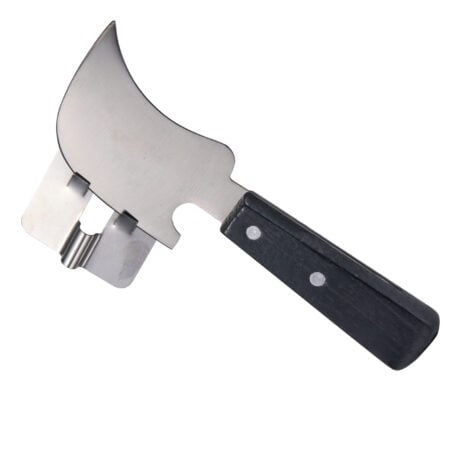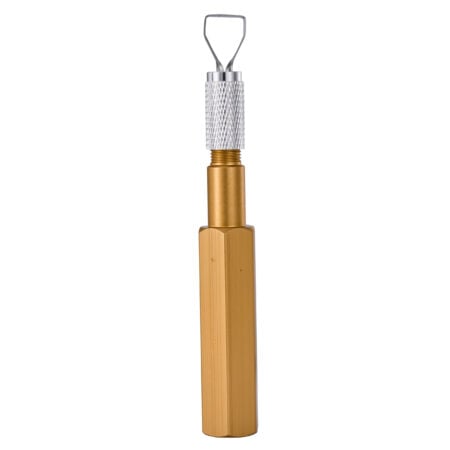Precision Weld Trimming Knives for Seam Finishing & Flooring Installation
Achieve seamless and professional vinyl flooring installations with our high-quality weld trimming knives. Designed for heat welding applications, our spatula-style, crescent blade, and corner trimming knives ensure clean and precise seam finishing. Whether you’re working with commercial vinyl, resilient flooring, or linoleum, our tools provide the perfect edge trimming for every installation.
Why Choose Our Weld Trimming Knives?
✅ High-Quality Blades – Crafted from stainless steel and durable alloys, our trimming knives ensure sharp, precise cuts and extended longevity.
✅ Optimized for Seam Finishing – Designed for vinyl flooring seam trimming, helping installers achieve a smooth, flush finish after heat welding.
✅ Ergonomic & Comfortable Handling – Lightweight with anti-slip grips, ensuring stability during high-precision trimming processes.
✅ Versatile for Various Flooring Materials – Ideal for PVC, commercial vinyl, resilient flooring, rubber flooring, and linoleum.
Types of Weld Trimming Knives for Vinyl Flooring
Standard Weld Trimming Knives
For General Seam Finishing
✔ Spatula-Style Trimming Knife – Best suited for flat and straight seams, providing smooth, even trimming without damaging the surrounding flooring material.
✔ Crescent Blade Trimming Knife – Ideal for curved welds and intricate trimming, offering greater control and precision over welding joints.
Recommended for: Large, open vinyl flooring surfaces where precise weld trimming is required.
Corner Weld Trimming Knives – For Tight Spaces & Edge Finishing
✔ Corner Weld Trimming Knife – O Type – Designed for round seams and curved welding joints, ensuring a seamless finish.
✔ Corner Weld Trimming Knife – T Type – Optimized for sharp, right-angle edges, particularly in wall-to-floor transitions.
✔ Corner Weld Trimming Knife – V Type – Best for narrow and tight spaces, allowing for clean, precise trimming in difficult-to-reach areas.
Recommended for: Wall edges, corners, T-joints, and small detailing areas where standard knives may struggle to reach.
How to Use a Weld Trimming Knife for Seam Finishing?
Preparing the Weld Seam
✔ Allow the welding rod to cool to the correct temperature before trimming to prevent deformation.
✔ Use a grooving tool before welding to create a uniform groove depth, ensuring a strong bond created between materials.
Choosing the Right Trimming Knife
✔ For flat weld seams, use a spatula-style or crescent blade knife.
✔ For corner and edge welds, select a corner trimming knife (O, T, or V type) based on the joint access required.
Trimming the Weld
✔ Perform the first pass to remove excess material.
✔ Allow the seam to cool, then make a second pass to achieve a flush, professional finish.
View Catalog & Request Your Quote
- Free samples (conditions apply).
- Direct factory pricing with volume discounts.
- Private labeling and packaging on request.
Frequently Asked Questions– Weld Trimming Tool
1、What is the purpose of a weld trimming knife in vinyl flooring installation?
A weld trimming knife is used to trim excess welding rod after heat welding vinyl flooring, resilient flooring, PVC, or linoleum. It ensures a smooth, flush seam, improving the appearance, durability, and water resistance of the welded joint.
2、What is the difference between a Spatula-Style and a Crescent Blade Trimming Knife?
✅ Spatula-Style Knife: Best for straight seams and large, open flooring areas. The flat edge ensures even trimming along long sections of welded flooring.
✅ Crescent Blade Knife: Designed for curved or irregular seams, offering greater flexibility when trimming welded joints in corners or rounded areas.
Which one to choose? If your project involves mostly flat surfaces, go with the Spatula-Style Knife. If you are working on curved or irregular flooring designs, the Crescent Blade Knife is the better choice.
3、Why do I need a different trimming knife for corner seams?
Corner weld trimming knives are specifically designed for tight spaces, edges, and difficult-to-reach areas that standard trimming knives cannot handle. These knives provide better control and precision for wall-to-floor joints, inner and outer corners, and stair edges.
4、What are the differences between O-Type, T-Type, and V-Type Corner Weld Trimming Knives?
✅ O-Type Knife: Ideal for curved or rounded corners, ensuring a smooth transition between flooring sections.
✅ T-Type Knife: Best for right-angle edges, such as wall-to-floor joints or stair edges. It provides a clean, precise trim for sharp, straight seams.
✅ V-Type Knife: Designed for narrow and tight spaces, ensuring accurate trimming without damaging surrounding flooring.
Which one to choose?
For curved welds: Use an O-Type Knife.
For straight, right-angle seams: Use a T-Type Knife.
For narrow, hard-to-reach areas: Use a V-Type Knife.
5、When should I trim the welding rod after heat welding?
You should wait for the welding rod to cool slightly before making the first pass with the trimming knife. If the weld is too hot, it may stretch or pull, leading to an uneven finish. After cooling, a second pass ensures a smooth, flush seam.
6、How do I maintain my weld trimming knife for long-lasting use?
Follow these maintenance tips:
✔ Store the knife in a dry, dust-free area to prevent rust or blade dulling.
✔ Keep the blade sharp by sharpening it regularly with a fine file or sharpening stone.
✔ Clean after each use to remove adhesive residue, debris, or welding material buildup.
✔ Use the correct knife for the right application to avoid excessive wear.
7、Can I use weld trimming knives on all types of flooring materials?
Yes! These trimming knives are suitable for:
PVC Flooring
Commercial Vinyl Flooring
Resilient Flooring
Rubber Flooring
Linoleum
Each flooring type may require different heat settings and trimming techniques, so always test on a small section before proceeding with a full installation.
8、How do I choose the right weld trimming knife for my flooring project?
onsider the following:
Flat weld seams: Use a Spatula-Style or Crescent Blade Knife.
Corners & edges: Choose an O-Type, T-Type, or V-Type Knife depending on the shape of the weld.
Tight or small spaces: A V-Type Knife provides better precision in narrow joints.







